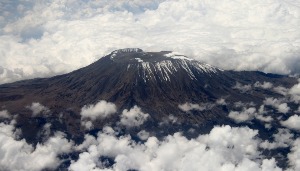
A recent study confirms the speculations that the snows of Kilimanjaro located in Tanzania, Africa, may be gone by 2022. Lonnie Thompson, a glaciologist at Ohio State University in Columbus, says that the ice on Kilimanjaro is disappearing at a concerning rate.
Scientists have been keeping track of Kilimanjaro’s melting glaciers for decades, but it has never been clear what exactly is causing the disappearance. A few studies have suggested that local factors, such as less snowfall, have been causing the melting. However, a new study revealed that climate change may be the main factor. The study says that rising temperatures are causing the ice to melt. The melting is accompanied by a rise in sublimation: a process that turns ice directly into water vapor at below freezing temperatures. Thompson and other scientists suspect that sublimation may be caused by drier weather. “What we are seeing on Kilimanjaro is global climate change,” Thompson says.
Thompson and his colleagues say that the mountain has lost a total of 84 percent of its glacial ice since 1912. There is clear evidence that 26 percent of the ice present in 2000 had disappeared by 2007. It was also discovered that signs of melting and refreezing on the surface of certain glaciers could be part of the reason that they are thinning. One way this was discovered was by a stake that was planted in the ground below a glacier on the mountain top. This showed the amount of ice before and after melting. The data collected showed that about 50 percent of the glacier’s mass has been lost since 2000. This specific glacier is thinning at a rate of 17 feet per year.
Back-to-back photographs of Kilimanjaro over the years show that the ice atop Africa’s highest point is melting at an alarming rate. Ice is now melting on the surface and at the margins, and scientists fear that it will all be gone within the next decade.
[Source:
news.geographic.com
]

